reprinted from www.USAPLNATIONALS.COM
PowerLifting: A beginners guide to what it is!
(Note: This is aimed at new lifters and is a very basic way of getting started. For best results find some powerlifters and start training with them!)
Where to start?
A simple routine would be to start doing a light benchpress workout on Monday; a light squat and back workout on Tuesday; a heavier benchpress workout on Thursday or Friday; and finally a heavy squat and deadlift workout on Saturday. The heavy days could easily be swapped to Monday and Tuesday instead of the end of the week.
Here’s one way….
Mon Tue Fri Sat
Lt. BP Lt. SQ/Back Hvy. BP Hvy. SQ/DL
Here’s another way…
Mon Tue Fri Sat
Hvy. BP Hvy SQ/DL Lt. BP Lt. SQ
(It’s important to get at least 2 days between working the same bodypart. This is just a basic plan that has worked for some. There are many other ways to do it.)
Stretching
Stretching is important in preventing injuries and allows greater flexibility. Take at least 5 minutes before each workout to stretch the muscles you are about to lift with.
How many sets & reps?
In the early stages, sets of 10 are great for working on lifters technique, building size, and getting into shape. At least 2-3 good work sets of 10 reps after performing some light warm-ups are a great start. A lighter downset or backoff set of 10-15 reps can be added at the end.
How many weeks do I train for?
After 4 hard weeks, a back-off week is helpful. A rest from hard training is helpful not just physically, but also mentally. The backoff week completes the 5 week cycle and prepares the lifter for the next 5 weeks. After 5 weeks of 10’s a lifter could then go to reps of 8’s for 5 weeks, raising the weight as long as good form is maintained. After 5 weeks of 8’s it’s onto reps of 5’s for 5 weeks. By this time the lifter is usually ready to handle some heavier weight for reps of 3’s. After 2 weeks of 3’s and 2 weeks of 2’s, a backoff week could be inserted. Using the heavier weight coupled with a backoff week will get the lifter ready to max out for a single rep. Coming off of the backoff week is a great time to see what can be done in each lift. This isn’t the only way, but a real basic way for beginners to get started.
What about assistance exercises?
Assistance work is exercises done to assist the Squat, Benchpress and Deadlift. They are done after the main lifts, and usually lighter weight is used for a couple sets of 8-10 reps. But be careful not to do too much assistance work. Too much can lead to overtraining, causing a lifter to get weaker instead of stronger! Opinions vary on exactly how much to do, but the less is better angle will keep you fresh and ready for your next workout.
A list of assistance exercises
For the Squat: Leg Extensions, Leg Curls, Calf raises, situps.
For the Benchpress: Dumbell benchpress, Close grip benchpress, Shoulder presses, Tricep cable pushdowns.
For the Deadlift: Bent over rows, Lat pulldowns, Shrugs.
These are just a few that can be thrown in at the end of a workout.
Technique: Is it important?
YES! Technique and form are everything in lifting. Here are a few pointers for each lift.
Squat: Start with an even grip, placing the bar low on the shoulders instead of the neck. Tense the entire body after taking a deep breath, then stand up. Then take 2 small steps away from the rack. After getting the feet set, look straight ahead or up. Now you’re ready to squat. With the chest up, take a deep breath and slowly push the hips backwards. As the hips go back, begin bending the knees, much like sitting back into a chair. Keep a good arch in the back being careful to prevent the weight from pulling you forward. Also try to keep the shins from drifting forward, making it easier to achieve proper depth. Descend until the hips are below the top of the knees, then reverse the weight explosively and start the trip back upward. Drive the shoulders back into the bar, and the chest upward. As the weight comes up, start pushing the hips forward and lock the knees. After standing for a second or two, walk the bar back to the rack.
Benchpress: Begin with an even grip, the feet flat, and the back arched. Take the bar with the elbows locked as it’s handed off to you. After pausing briefly with the elbows locked, take a deep breath and slowly begin the decent towards the chest. Be conscious of where your elbows are. They shouldn’t be to close to the body, while at the same time too far away either. A 45 degree angle from the body works well. As the bar comes down, keep the chest high and hips on the benchpress. After gently touching the chest, start the movement back up with one explosive motion. As the bar gets over halfway up, start thinking about pushing the hands towards the waist or even the feet. This will help develop a stronger lockout. Once the bar is fully locked out, pause a second or two before the spotter takes it to the rack.
The Deadlift: Position of the feet vary on the deadlift from really wide stances that use more legs, to narrow stances that use more back. As a rule, most of the time a wide stance (Sumo DL) works well for shorter lifters; while a closer stance (Conventional DL) works well for taller lifters. Both should be tried to see what style is easiest. After getting a good stance, a shoulder width grip should be taken, with the one palm up, and one palm down. Keep the back arched and chest up while taking a deep breath. Just before pulling it of the floor, the abdominal muscles should be tensed. Begin the pull without jerking, as the bar comes up, try to keep it as close to the body as possible. Just let the arms hang straight down and pull the bar without shrugging it. The farther away it gets the harder it is. Once the bar is over the knees, pull it into the thighs and lock the legs and back. Be careful not to rest the bar on the thighs and double-bend the knees. This will cause the lift to be turned down in a powerlifting meet. After locking it out, pause for a second or two, then lower the bar with control.
What about the meets?
At the powerlifting meets, lifters are allowed 3 squats, 3 benchpresses and 3 deadlifts. One lift in each event is needed in order to continue. If a lifter fails to complete a squat they cannot bench or deadlift. If they do get a squat, they are allowed to go onto the benchpress. Then as long as they register a successful bench, they can deadlift. Failure to make a lift in any of the three events is called bombing out.
How are winners determined?
Your best squat, is added with your best benchpress and deadlift for your total. Whoever has the highest total, wins. In the event that two people tie, the lighter lifter is the winner. As the deadlifts begin, lifters will add the numbers to determine the exact deadlift they need to out-Total whoever is in first place.
Do I compete with everybody?
No. Fortunately this is a sport where the people of all sizes have a chance. There are weight classes, much like amateur wrestling. The class limits for women are: 97, 105, 114, 123, 132, 148, 165, 181, 198 & SHW. The class limits for men are: 114, 123, 132, 148, 165, 181, 198, 220, 242, 275 and SHW.
The USAPL
In 1982 a group was formed to promote powerlifting meets with the purpose of holding steroid free competitions. Most meets held in the St. Louis area are USAPL meets that conduct urine tests for anabolic steroid and stimulants. At these meets, lifters are required to purchase a USAPL card, which allows them to compete in steroid free meets for the rest of that year. We feel that it’s important to train and compete entirely without steroids; and that lifters CAN get strong without them.
What about records and National meets?
A set of records are kept for each state as well as the USA. If a lifter gets strong enough, they can set records being the strongest for their weight and age class. There are also National competitions to compete in. The Teenage Nationals are held each summer and require that a lifter post a qualifying total just to enter. It is traditionally a harder meet with tough competition. The High School Nationals are held every March for high school kids, and require only that a lifter has lifted in a sanctioned USAPL powerlifting meet. St. Louis is hosting the High School Nationals in 2002.
What do I wear in a meet?
At most meets, a one piece lifting suit is required. The only exception to this is local meets that are for high school lifters only. At local high school meets, shorts and t-shirts are allowed. Gear that increase a lifters total and safety are also acceptable. They include 4 inch powerbelts, knee wraps and special one ply suits designed for squatting and benching.
Rick Fowler
www.USAPLNATIONALS.COM

PowerLifting: A beginners guide to what it is!
(Note: This is aimed at new lifters and is a very basic way of getting started. For best results find some powerlifters and start training with them!)
Where to start?
A simple routine would be to start doing a light benchpress workout on Monday; a light squat and back workout on Tuesday; a heavier benchpress workout on Thursday or Friday; and finally a heavy squat and deadlift workout on Saturday. The heavy days could easily be swapped to Monday and Tuesday instead of the end of the week.
Here’s one way….
Mon Tue Fri Sat
Lt. BP Lt. SQ/Back Hvy. BP Hvy. SQ/DL
Here’s another way…
Mon Tue Fri Sat
Hvy. BP Hvy SQ/DL Lt. BP Lt. SQ
(It’s important to get at least 2 days between working the same bodypart. This is just a basic plan that has worked for some. There are many other ways to do it.)
Stretching
Stretching is important in preventing injuries and allows greater flexibility. Take at least 5 minutes before each workout to stretch the muscles you are about to lift with.
How many sets & reps?
In the early stages, sets of 10 are great for working on lifters technique, building size, and getting into shape. At least 2-3 good work sets of 10 reps after performing some light warm-ups are a great start. A lighter downset or backoff set of 10-15 reps can be added at the end.
How many weeks do I train for?
After 4 hard weeks, a back-off week is helpful. A rest from hard training is helpful not just physically, but also mentally. The backoff week completes the 5 week cycle and prepares the lifter for the next 5 weeks. After 5 weeks of 10’s a lifter could then go to reps of 8’s for 5 weeks, raising the weight as long as good form is maintained. After 5 weeks of 8’s it’s onto reps of 5’s for 5 weeks. By this time the lifter is usually ready to handle some heavier weight for reps of 3’s. After 2 weeks of 3’s and 2 weeks of 2’s, a backoff week could be inserted. Using the heavier weight coupled with a backoff week will get the lifter ready to max out for a single rep. Coming off of the backoff week is a great time to see what can be done in each lift. This isn’t the only way, but a real basic way for beginners to get started.
What about assistance exercises?
Assistance work is exercises done to assist the Squat, Benchpress and Deadlift. They are done after the main lifts, and usually lighter weight is used for a couple sets of 8-10 reps. But be careful not to do too much assistance work. Too much can lead to overtraining, causing a lifter to get weaker instead of stronger! Opinions vary on exactly how much to do, but the less is better angle will keep you fresh and ready for your next workout.
A list of assistance exercises
For the Squat: Leg Extensions, Leg Curls, Calf raises, situps.
For the Benchpress: Dumbell benchpress, Close grip benchpress, Shoulder presses, Tricep cable pushdowns.
For the Deadlift: Bent over rows, Lat pulldowns, Shrugs.
These are just a few that can be thrown in at the end of a workout.
Technique: Is it important?
YES! Technique and form are everything in lifting. Here are a few pointers for each lift.
Squat: Start with an even grip, placing the bar low on the shoulders instead of the neck. Tense the entire body after taking a deep breath, then stand up. Then take 2 small steps away from the rack. After getting the feet set, look straight ahead or up. Now you’re ready to squat. With the chest up, take a deep breath and slowly push the hips backwards. As the hips go back, begin bending the knees, much like sitting back into a chair. Keep a good arch in the back being careful to prevent the weight from pulling you forward. Also try to keep the shins from drifting forward, making it easier to achieve proper depth. Descend until the hips are below the top of the knees, then reverse the weight explosively and start the trip back upward. Drive the shoulders back into the bar, and the chest upward. As the weight comes up, start pushing the hips forward and lock the knees. After standing for a second or two, walk the bar back to the rack.
Benchpress: Begin with an even grip, the feet flat, and the back arched. Take the bar with the elbows locked as it’s handed off to you. After pausing briefly with the elbows locked, take a deep breath and slowly begin the decent towards the chest. Be conscious of where your elbows are. They shouldn’t be to close to the body, while at the same time too far away either. A 45 degree angle from the body works well. As the bar comes down, keep the chest high and hips on the benchpress. After gently touching the chest, start the movement back up with one explosive motion. As the bar gets over halfway up, start thinking about pushing the hands towards the waist or even the feet. This will help develop a stronger lockout. Once the bar is fully locked out, pause a second or two before the spotter takes it to the rack.
The Deadlift: Position of the feet vary on the deadlift from really wide stances that use more legs, to narrow stances that use more back. As a rule, most of the time a wide stance (Sumo DL) works well for shorter lifters; while a closer stance (Conventional DL) works well for taller lifters. Both should be tried to see what style is easiest. After getting a good stance, a shoulder width grip should be taken, with the one palm up, and one palm down. Keep the back arched and chest up while taking a deep breath. Just before pulling it of the floor, the abdominal muscles should be tensed. Begin the pull without jerking, as the bar comes up, try to keep it as close to the body as possible. Just let the arms hang straight down and pull the bar without shrugging it. The farther away it gets the harder it is. Once the bar is over the knees, pull it into the thighs and lock the legs and back. Be careful not to rest the bar on the thighs and double-bend the knees. This will cause the lift to be turned down in a powerlifting meet. After locking it out, pause for a second or two, then lower the bar with control.
What about the meets?
At the powerlifting meets, lifters are allowed 3 squats, 3 benchpresses and 3 deadlifts. One lift in each event is needed in order to continue. If a lifter fails to complete a squat they cannot bench or deadlift. If they do get a squat, they are allowed to go onto the benchpress. Then as long as they register a successful bench, they can deadlift. Failure to make a lift in any of the three events is called bombing out.
How are winners determined?
Your best squat, is added with your best benchpress and deadlift for your total. Whoever has the highest total, wins. In the event that two people tie, the lighter lifter is the winner. As the deadlifts begin, lifters will add the numbers to determine the exact deadlift they need to out-Total whoever is in first place.
Do I compete with everybody?
No. Fortunately this is a sport where the people of all sizes have a chance. There are weight classes, much like amateur wrestling. The class limits for women are: 97, 105, 114, 123, 132, 148, 165, 181, 198 & SHW. The class limits for men are: 114, 123, 132, 148, 165, 181, 198, 220, 242, 275 and SHW.
The USAPL
In 1982 a group was formed to promote powerlifting meets with the purpose of holding steroid free competitions. Most meets held in the St. Louis area are USAPL meets that conduct urine tests for anabolic steroid and stimulants. At these meets, lifters are required to purchase a USAPL card, which allows them to compete in steroid free meets for the rest of that year. We feel that it’s important to train and compete entirely without steroids; and that lifters CAN get strong without them.
What about records and National meets?
A set of records are kept for each state as well as the USA. If a lifter gets strong enough, they can set records being the strongest for their weight and age class. There are also National competitions to compete in. The Teenage Nationals are held each summer and require that a lifter post a qualifying total just to enter. It is traditionally a harder meet with tough competition. The High School Nationals are held every March for high school kids, and require only that a lifter has lifted in a sanctioned USAPL powerlifting meet. St. Louis is hosting the High School Nationals in 2002.
What do I wear in a meet?
At most meets, a one piece lifting suit is required. The only exception to this is local meets that are for high school lifters only. At local high school meets, shorts and t-shirts are allowed. Gear that increase a lifters total and safety are also acceptable. They include 4 inch powerbelts, knee wraps and special one ply suits designed for squatting and benching.
Rick Fowler
www.USAPLNATIONALS.COM



 Please Scroll Down to See Forums Below
Please Scroll Down to See Forums Below 










